March Sale Features Powerful Silver and Furniture Lots
March 9th, 2013
|
It’s not common to have an object sell at auction for $100,000 over its high estimate, but this circa 1740 silver salver by George Ridout of New York City did just that. One of five lots with a Livingston family provenance, the 14¼" wide, 63-ounce, pre-Revolution salver brought $159,300 from a phone bidder.
A phone bidder paid $73,750 for My Favorite Doll, 1918, a 22" x 18" oil on canvas by Edmund Tarbell (est. $45,000/65,000).
The Salem, Massachusetts, mahogany reverse serpentine-front chest was attributed to cabinetmaker John Chipman and sold for $89,680. See the main story for more about this and other Chipman chests.
The cherry Queen Anne tea table has a wonderfully scalloped top and great cabriole legs with pad feet. When it came up for sale at Christie’s in October 1991, the auctioneer announced that the top was a replacement (that fact hadn’t been included in the catalog description); it brought $33,500 then. Now, 22 years later, Northeast Auctions sold it for $29,500.
The Elder’s rocking chair from Enfield, New Hampshire, was offered with a $2000/5000 estimate and brought $1534. That price was better than any of the ten Shaker items grouped together later in the sale. In that group (not shown), a pine two-drawer blanket chest with bootjack ends brought $177; a blue-green pine dough box with cover from Sabbathday Lake sold for $590; a Maine pine and maple work stand or washstand with concave shaped sides and three drawers brought $236; and a pine blanket chest with two drawers from Sabbathday Lake sold for $796.50.
Consigned by “a New England Financial Institution,” the oil on canvas landscape with footbridge and figures fishing by Thomas Doughty (1793-1856), signed and dated 1835, 27¼" x 34½", brought $18,880.
Sold at Sunday’s session, the 2" long Victorian gold, enamel, and diamond pendant watch is small and very desirable. It brought $14,750. |
Northeast Auctions, Portsmouth, New Hampshire
Photos courtesy Northeast Auctions
Ron Bourgeault packed the front parlor room of his Treadwell Mansion in Portsmouth, New Hampshire, about as full as he could on the first day of the March 9 and 10 Northeast Auctions sale.
They were there for a pretty good Saturday session. There was a selection of pieces from the Los Angeles County Museum of Art, which included a group of dark blue transfer-decorated Staffordshire pottery with American views; some great early 18th-century American silver in desirable shapes by rare makers; and, finally, some very attractive American 18th- and 19th-century furniture. Some of that furniture escaped the bondage of dismal prices and brought back memories of the days when highboys and tea tables excited people.
It wasn’t all beer and skittles. There were some low-end lots too, such as furniture that had been way overestimated, mediocre paintings, and Shaker items that shook up no one, but those lots aren’t what Bourgeault and the rest of us will remember. Along with the chaff, there was wheat, and Bourgeault had enough of the latter to make this sale a very good omen (possibly) for the rest of 2013. It totaled $1.507 million.
The first four lots to cross the podium, pieces of dark blue historical Staffordshire pottery, exceeded their high estimates, with the most expensive one, a platter decorated with the Arms of Delaware, selling for $5192 (including buyer’s premium). Of the 21 lots of historical Staffordshire from the Los Angeles County Museum of Art, all but one went to phone and/or bids left with the auctioneer—pretty much the rote for the auction scene these days.
Bourgeault, however, wasn’t as fortunate when he offered the nine lots that came from a descendant of the Isham family of Rhode Island. Six very pricey lots were passed, and only a $708 bed, a $708 side chair, and an $8260 shelf clock sold. The Rhode Island Queen Anne mahogany tea table (est. $22,000/32,000), the mahogany slant-lid desk attributed to Timothy Townsend (est. $25,000/40,000), the New York upholstered wing chair (est. $10,000/20,000), the Rhode Island birch highboy (est. $8000/12,000), and the China trade view of the hongs at Hong Kong (est. $24,000/32,000) failed to attract bids.
“Those will have to be reevaluated,” Bourgeault said. “I didn’t do those appraisals.”
If that group was a downer, the Livingston family silver was a definite upper. Two lots simply overwhelmed their estimates. The oval silver salver with a beautifully executed shell and scroll border and on four scrolled feet, was made by George Ridout of New York City, circa 1740, and carried a $25,000/45,000 estimate. Portsmouth, New Hampshire, dealer Jonathan Trace, seated in a crowded corner of the room, competed with a devoted phone bidder until the latter finally won the salver at $159,300. The silver punch ladle and a pair of tiny salt spoons, all by Isaac Hutton of Albany, brought $30,680 (est. $3000/5000) from the same phone bidder who took the salver.
An unnamed Massachusetts estate provided the piece that brought the sale’s highest furniture price. The reverse serpentine-front carved mahogany chest was attributed to Salem, Massachusetts, maker John Chipman and carried the provenance of Israel Sack. Chipman also made slant-lid desks and at least one secretary.
The Israel Sack firm had offered a reverse serpentine-front chest in its full-page ad in the November 1988 issue of The Magazine Antiques (it’s shown on the inside front cover). That chest, 36" high x 39" wide and fitted with brass bail-and-post hardware of the Queen Anne type, carried a full inscription, “Made by / John Chipman / Salem 1794.”
Another chest with the identical inscription and 1794 date appears in Charles Woolsey Lyon’s full-page ad in the May 1968 issue of The Magazine Antiques. Unfortunately, no dimensions were given.
Chipman reverse-serpentine mahogany chests have sold for high prices at auction in the last decade. Sotheby's sold one at its January 19-21, 2007, sale for $168,000; Northeast Auctions sold one at its February 22-24, 2008, sale for $150,000 to Albert Sack; and at Sotheby’s September 26, 2008, sale of the collection of Admiral Moore and his wife one brought $194,500.
There was in-house competition at Northeast, but a phone bidder prevailed and took the chest for $89,680.
A Connecticut River valley cherry tea table with great stance and boldly scalloped top, probably made in Northampton or Hatfield, Massachusetts, brought $29,500. When Christie’s offered it on October 19, 1991, it had brought $33,500; the auctioneer at that sale made an announcement from the podium that the top had been replaced. When the table was flipped here, that fact became obvious.
Concord, New Hampshire, dealer Gary Yeaton, seated in the audience, took a very clean and attractive early Massachusetts Queen Anne burl walnut veneered highboy. It was small, only 66¾" high x 35½" wide, and looked just as good on the back as it did on the front. Yeaton paid a very reasonable $37,760 for it.
A mahogany block-and-shell carved three-drawer chest with three large carved shells on the top drawer, a conforming molded skirt, and shaped bracket feet had a low $12,000/18,000 estimate. Bidders liked it a lot better than those figures indicated because someone in the room paid $46,020 for it.
There were a few surprises among the other lots too, such as the 3" high painted wax model of a pack horse with fabric and leather pack. It had belonged to Western artist Charles M. Russell and was purported to be the model that Russell used for the illustrations in the book Bucking the Sagebrush (1904). It packed a $3000/5000 estimate but soon bucked that off and was corralled only when it reached $35,400.
A consignment of ten oils on canvas from a “New England Financial Institution” (think “bank”) did very well too. All stayed within or exceeded their estimates. A William Hart landscape with a view looking toward Castleton, Vermont, went at $22,240 to someone who had left a bid with the auctioneer; a Thomas Doughty landscape with fishermen sold for $18,880 to a phone bidder; and Marshall Johnson Jr.’s seascape with clipper ship and tugboat apparently sold to a bidder in the audience for $17,700.
The auction’s highest-priced painting was Edmund Tarbell’s 1918 portrait of a young girl holding My Favorite Doll. The 22" x 18" oil on canvas sold to a phone bidder for $73,750.
The Sunday session consisted of jewelry, European furniture, and assorted decorative objects. The top-priced jewelry lot was a woman’s tiny, only 2" long, gold Victorian pendant watch in the form of a beetle with red enameled body. Northeast had guessed that it would bring between $1200 and $2200 (isn’t that actually what most estimates are, informed guesses?), but the beetle watch took off and was transformed into a $14,750 objet d’art.
There was quite a selection of porcelain objects by Meissen and other makers in the Sunday session. A 6" high, mid-18th-century figure of the Italian comedy figure Pantalone by Meissen was the top-priced lot of that category. Modeled by Johann Kändler and Peter Reinicke, Pantalone wore a black skullcap, red jerkin and breeches, and a flowing white cape or coat. Estimated at $3000/5000, it sold for $11,564. That’s a good price, but Northeast sold a German porcelain male commedia dell’arte figure of Harlequin holding a slapstick for $29,250 on May 17, 2009.
For more information, contact Northeast Auctions at (603) 433-8400; Web site (www.northeastauctions.com).
|
|
Originally published in the May 2013 issue of Maine Antique Digest. © 2013 Maine Antique Digest


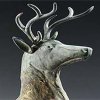

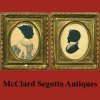


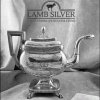


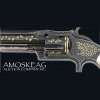







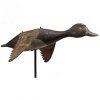

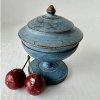


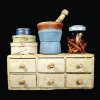










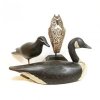


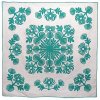







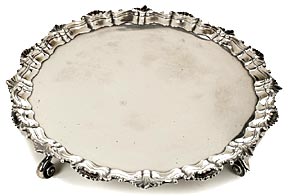
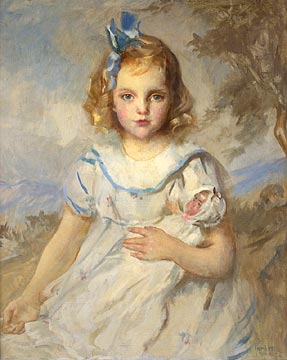
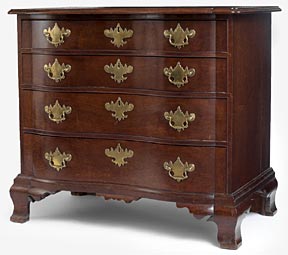
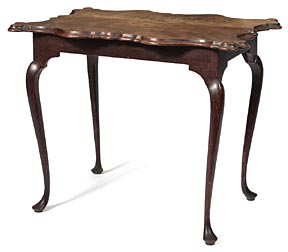
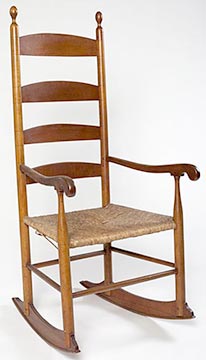
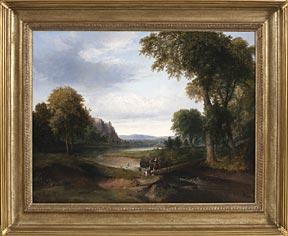

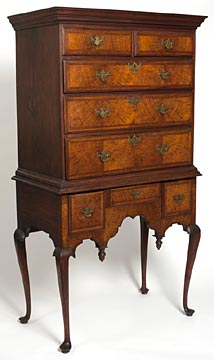 A very clean, desirable, and small (66¾" high x 35½" wide) Massachusetts Queen Anne burl walnut veneered highboy sported nicely crossbanded veneered drawers, applied cornice moldings, cabriole legs, and platformed pad feet. New Hampshire dealer Gary Yeaton got it for $37,760.
A very clean, desirable, and small (66¾" high x 35½" wide) Massachusetts Queen Anne burl walnut veneered highboy sported nicely crossbanded veneered drawers, applied cornice moldings, cabriole legs, and platformed pad feet. New Hampshire dealer Gary Yeaton got it for $37,760.








